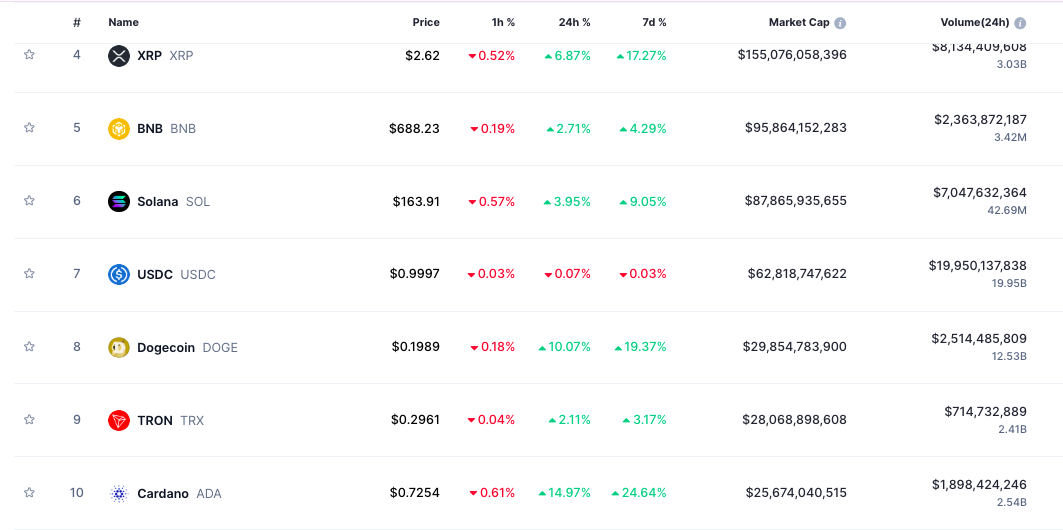Every time I visit my favorite coffee shop, the barista gives me a smile, nods, and brings my go-to order in a few minutes. It’s a relationship built on trust and loyalty. Imagine if all your customers felt the same about your brand.
In crowded markets where buyers are spoilt for choice, gaining consumer confidence can help you become a trusted name. This confidence will ultimately influence buying decisions and drive business growth.
In this article, I’ll explain consumer confidence and provide actionable tips for increasing this index for your business.![Download Now: Free Marketing Plan Template [Get Your Copy]](https://no-cache.hubspot.com/cta/default/53/aacfe6c7-71e6-4f49-979f-76099062afa0.png)
We’ll cover:
- What is consumer confidence?
- How is consumer confidence measured?
- Why is consumer confidence important?
- How to Increase Consumer Confidence in Your Business
What is consumer confidence?
Consumer confidence measures the degree of optimism customers feel about spending money on purchases. It predicts economic conditions for upcoming months based on consumers’ financial situation and willingness to spend or save money.
If people are optimistic about their finances, they’ll likely spend more and drive economic growth. But if they feel pessimistic, they’ll minimize spending, leading to a slowdown.
Here are three pillars for businesses to build consumer confidence and gain customer loyalty:
- Honesty. When brands choose authenticity over popularity and keep their messaging transparent, they set the right expectations for potential buyers. This creates a more truthful buying experience where consumers aren’t worried about being scammed or getting low-quality products/services.
- Trust. Trust is an extension of the honesty pillar. For consumers to trust your business, you have to make realistic promises and deliver on all promises — right from deals and discounts to timely delivery and customer support. This ultimately leads to greater satisfaction and healthy relationships, translating into customer loyalty.
- Consistency. To retain consumer confidence, you need to consistently deliver premium-quality products/services. This is a big part of building your reputation as a trusted, high-quality brand, which allows people to make more confident buying decisions.
Now that we’ve cleared the basics, let’s understand how consumer confidence is measured and why it matters to your business.
How is consumer confidence measured?
The Consumer Confidence Index (CCI) is an economic indicator where the Conference Board measures people’s financial behaviors and willingness to spend.
Here’s how the CCI is measured in different phases:
- Survey creation. The CCI survey includes five questions about people’s present situation and future expectations. Respondents can choose from three options to answer a question: positive, negative, or neutral.
- Relative value calculation. After all the data is collected, the positive responses for each question are divided by the sum of all positive + negative responses. This gives the relative value for every question, which is compared against the relative values from 1985 (the original benchmark for CCI).
- Interpretation. The average of the relative value of all five questions becomes the Consumer Confidence Index. The index value of >100 indicates a high confidence level and economic growth. On the other hand, an index value below 100 signals a slowdown with a low willingness to spend.
Why is consumer confidence important?
- Higher sales and revenue. When people feel financially secure, they’re more eager to spend money. This can unlock new revenue streams for businesses and drive more conversions.
- Business expansion. A consistently positive buying sentiment means businesses will have enough cash flow to expand their operations. You can hire more employees, open a new branch, enter new markets, or add more product lines/services.
- Greater customer loyalty. High CCI also promises customer retention because customers can continue to shop from brands they trust. You have the opportunity to create long-term relationships with repeat buyers.
- Stable workforce. Another big benefit for companies operating in a high-confidence climate is the ability to stabilize their workforce. You don’t have to hire rapidly or lay people off, and instead focus on mutual growth.
So, what can you do to increase people’s confidence in your brand? Let’s find out.
How to Increase Consumer Confidence in Your Business
1. Maintain an authentic brand image.
Transparency
In this post, Cosmix highlights how its product is different from most on the market because it’s made with real vanilla. This video gives you a glimpse of its manufacturing process.
Brand Values
Social Proof
2. Simplify the buying experience.
That’s why you have to make the buying process as simple and seamless as possible.
- Website navigation. Make your website so easy to navigate that people can shop even while asleep. Instead of frustratingly searching, it should give customers what they need in a few clicks.
- Clear pricing details. Be transparent and share your pricing information upfront to help people make an informed buying decision. You should also avoid complex price points to avoid confusion.
- On-demand support. Offer round-the-clock support or create a self-serve support model for people to find relevant answers whenever they need.
- Convenient checkout. Make checkout a breeze without asking people to jump through hoops. You can also add a guest checkout option for quick orders.
- Multiple payment options. Given that at least 15% of consumers expect high payment diversification, you should add various payment options to maximize conversions. Here’s an example of Cleartrip offering various payment methods:
3. Embrace consultative selling.
Here are a few ways to leverage consultative selling to increase consumer confidence:
- Listen intently to your audience and understand their pain points.
- Share user-generated content to contextualize your solution for their use cases.
- Ask questions and encourage people to open up about their challenges + expectations.
- Share helpful resources tailored to specific challenges to educate and guide customers.
- Proactively support customers after purchase to solve queries and ask for feedback.
4. Deliver empathetic support.
You can also leverage social channels to deliver proactive support and address grievances.
Maximize Consumer Confidence in Your Brand
Gaining consumer confidence isn’t just a nice-to-have anymore. You need to strengthen your brand reputation and consistently deliver value to your buyers to win their trust.
I’ve outlined different ways in which a positive Consumer Confidence Index can help businesses. You can also strategize to get started with these best practices to increase confidence in your brand and delight customers through consultative selling, seamless checkout journeys, and round-the-clock support.

















